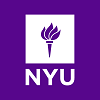New York University (NYU) is home to Tisch School of the Arts (NYU Tisch). Founded in 1965 as the School of the Arts, the school was renamed in 1982 after receiving a gift from billionaire brothers and businessmen Laurence A. and Preston Robert Tisch. Today, NYU Tisch provides BA, BFA, MA, MFA, MPS, and PhD degrees in areas such as cinema studies, collaborative arts, film and television, game design, interactive media arts, performance studies, and recorded music.
NYU Tisch also houses the Department of Game Design. Founded in 2008 and known as NYU Game Center, the department hosts workshops, academic seminars, playtests, tournaments, and other events such as NYU Game Center Lecture Series; No Quarter Exhibition (est. 2010); the annual Strategy Guide—Breaking into the Game Industry Workshop; and the professional game conference PRACTICE—Game Design in Detail.
Other NYU Game Center highlights include access to the Clive Davis Institute of Recorded Music; the Game Center Open Library; hands-on experiences in the center’s development studios and play labs; internship opportunities at places such as Blizzard Entertainment, Riot Games, and Disney; and the opportunity to participate in study away programs at NYU’s other campuses in Abu Dhabi and Shanghai, and academic centers in London, Paris, Washington, D.C., Prague, Berlin, Tel Aviv, Buenos Aires, Sydney, Florence, and Madrid.
NYU Game Center students may also participate in The Game Center Incubator. Launched in 2014, the incubator provides expertise, funding, and space for projects with commercial potential. Incubator leaders help select students see projects through to a public launch.
For students seeking an advanced degree, NYU Game Center provides an MFA in Game Design. This two-year program consists of coursework in game history, game design, game studies, game production, game studio, and play labs. Students will also select a number of electives that support their interests and goals.
The first semester of the program is structured to include Game Design 1; Code Lab 0; Games 101; Game Studio 1; and Visual Lab 0. The second semester is more flexible, so students will take just two required courses—Game Studies 1 and Game Studio—along with their chosen electives.
Examples include Intermediate Programming for Games; Prototype Studio; 3D Game Studio-Unity; Shader Lab; Tech Art Studio; Tackling Representation in Games; Horror Games; American Computer Games of the 1980s; UI/UX for Games; Mobile Game Studio; and Survival Skills.
The Game Design MFA program at NYU culminates with a thesis, completed across two courses (12 credit hours). Thesis projects may be completed individually or in teams. Examples of possible projects include a series of small games, a sport, digital games, or card games. MFA projects will be presented at the NYU Game Center Spring Show.
NYU Game Center MFA graduates will enter the job market with a resume, several finished games or related works, and the assistance of NYU’s extensive Wasserman Career Center. As part of Tisch School of the Arts, NYU Game Center graduates also have access to the school’s own Office of Career Development, which helps alumni launch their creative careers.
NYU Game Center alumni are prepared to pursue advanced roles in all areas of games. Program alumni have been hired at places such as Blizzard Entertainment, Riot Games, Disney, Nickelodeon, ESPN, Amazon, Tencent Holdings, Avalanche Studios Group, Take-Two Interactive Software, Arkadium Games, and the International Game Developers Association Japan (IGDA Japan). Some alumni have also gone on to launch their own studios, write books, organize festivals, and win awards.











